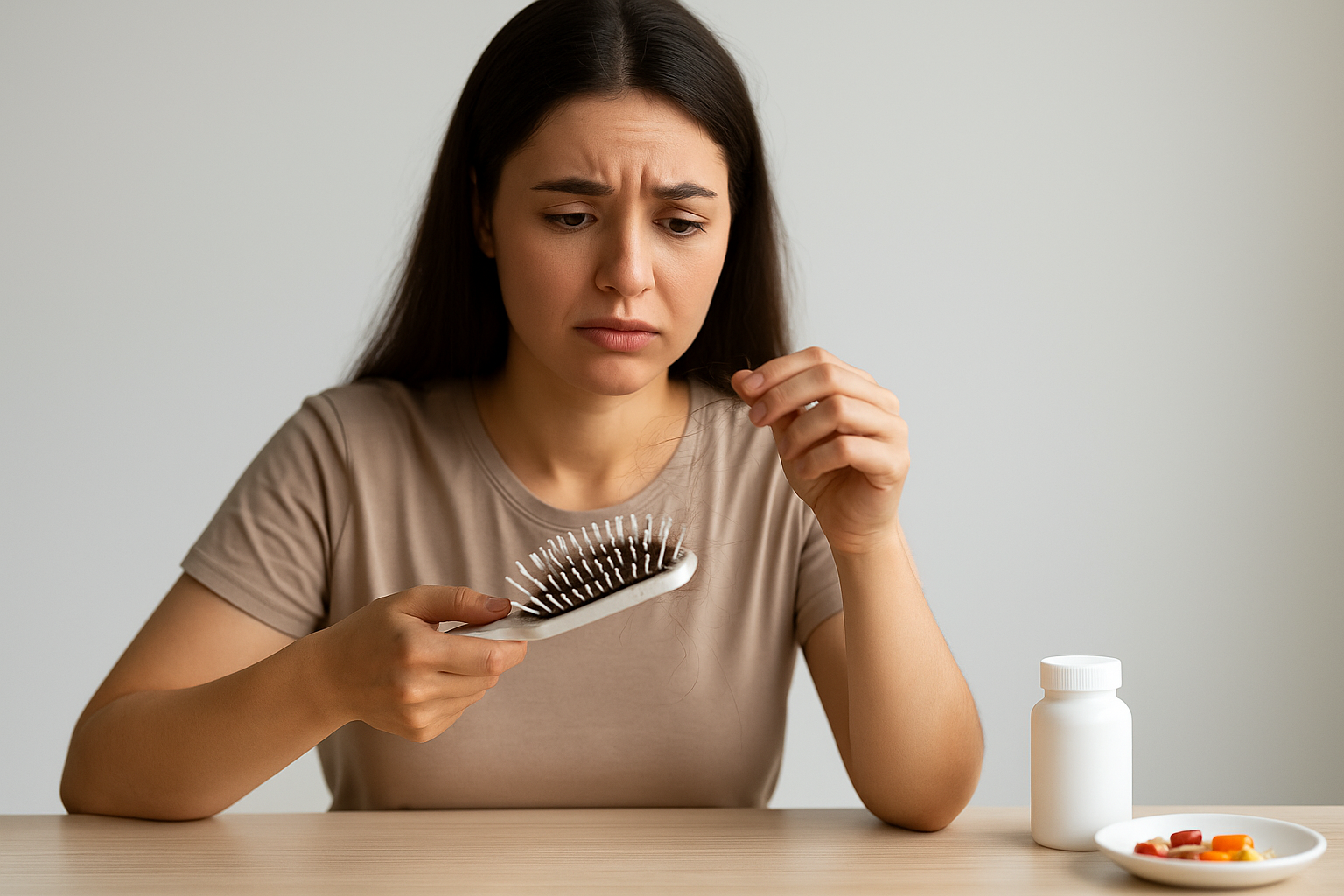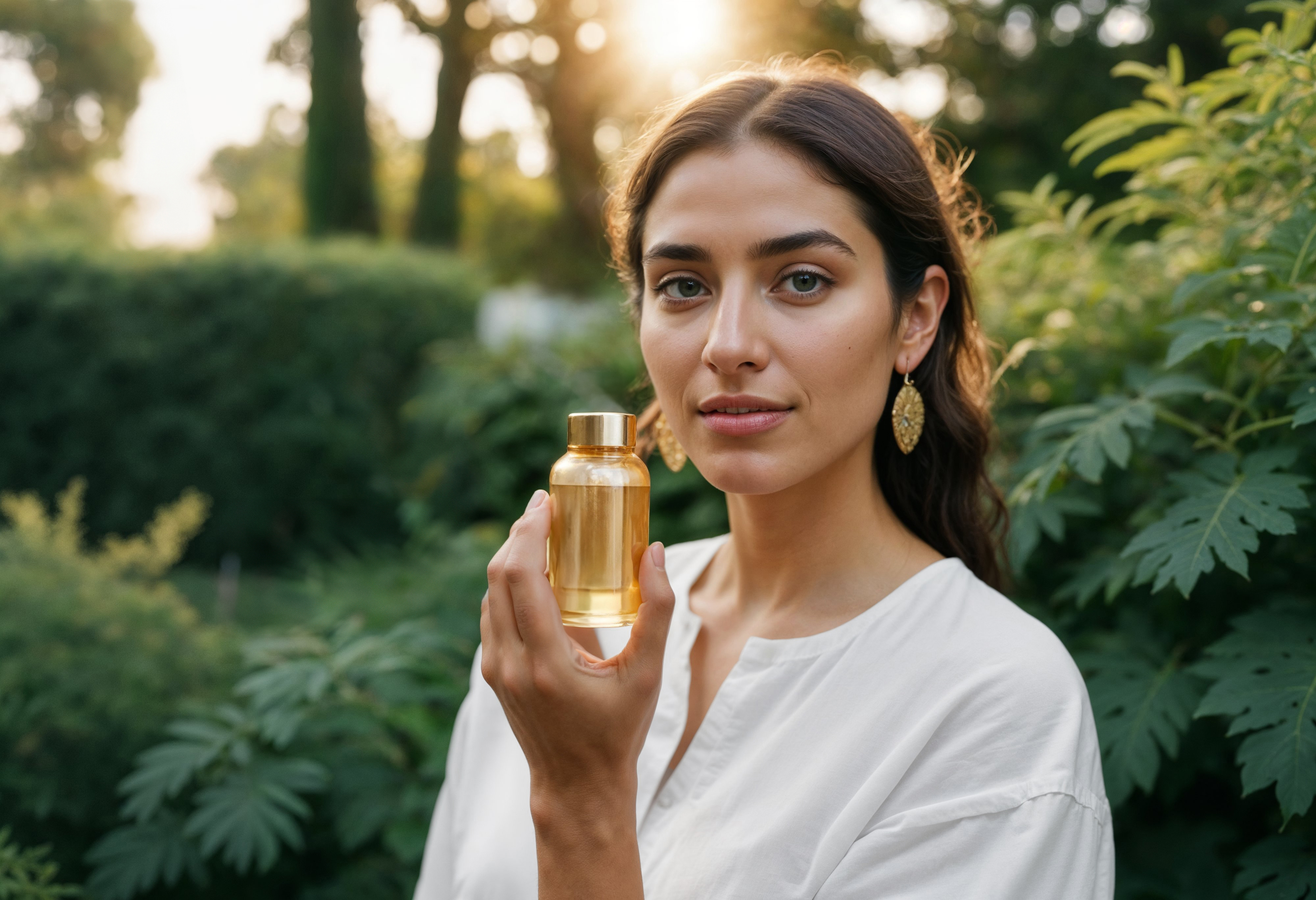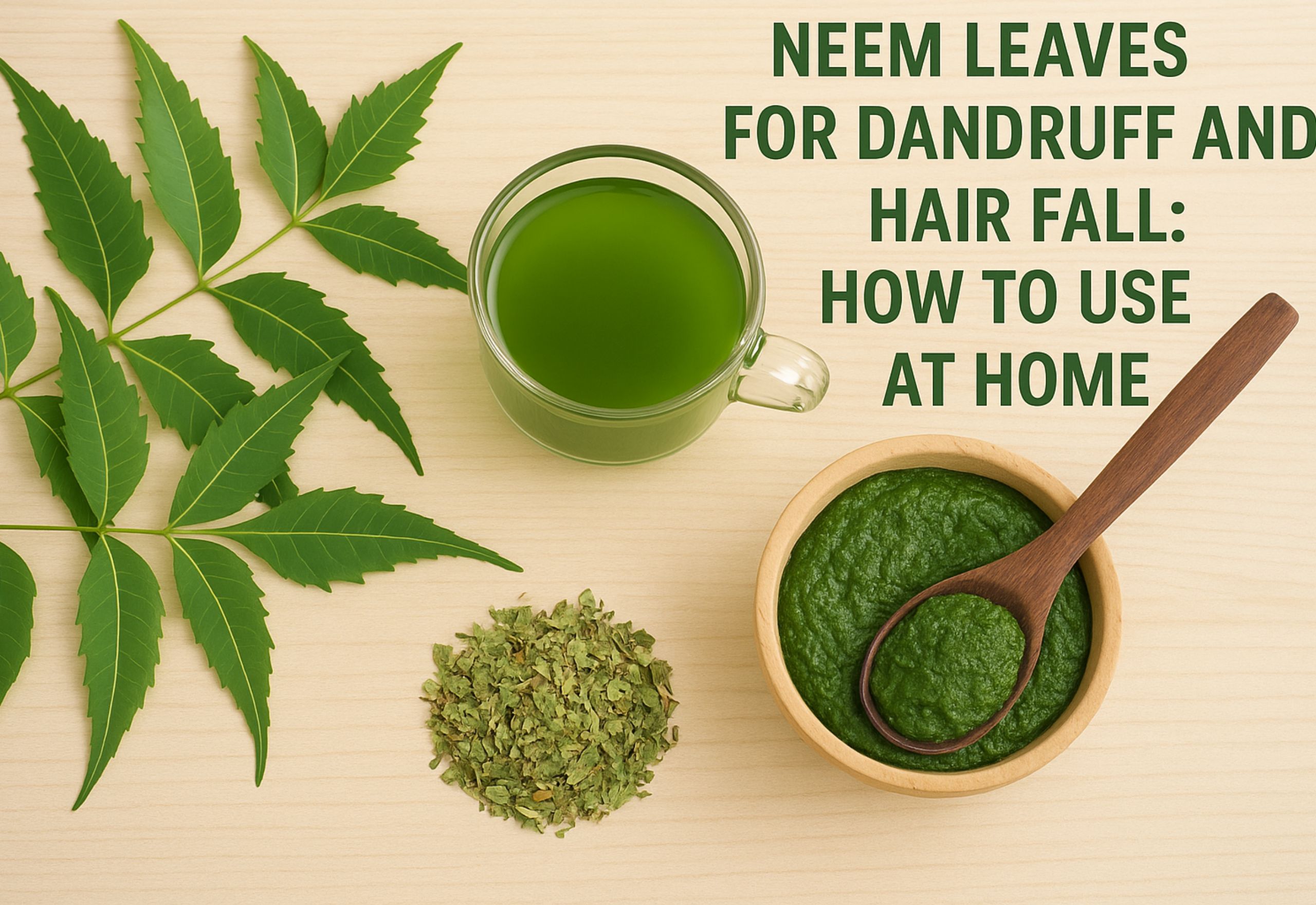Good hair care isn’t just about selecting any shampoo and conditioner; it’s about learning how to use shampoo and conditioner correctly for healthier, more manageable hair. One of the things many people wonder is, “Should I use conditioner after shampoo?” And the answer is an absolute yes. While shampoo plays a vital role in cleaning the scalp and washing away excess oils, it dries natural moisture and leaves hair coarse or dry. That is where the use of conditioner after shampooing comes in. A conditioner replenishes moisture, silky-softens hair strands, smooths frizz, and helps keep hair strands from breaking.
This blog will guide you on how to shampoo and condition appropriately, explain the importance of each, and help you become the king or queen of the ideal routine for your unique hair needs and type.
Also Read: 7 Reasons To Use Conditioner After Every Wash
What Is Shampoo?
Shampoo is the foundation ingredient of any hair care routine. It is primarily designed to wash the scalp and hair by removing dirt that has accumulated, excess oils, sweat, dead skin, and product buildup. This is accomplished with the assistance of surfactants, which are cleansing agents that allow oil and water to mix, which will more readily permit impurities to be washed out. While shampoo is good at cleaning, though, it can also strip the hair of the natural oils it needs for moisture and protection. This can leave the hair dry, coarse, or brittle, especially when shampooing too frequently or using harsher products.
Also, shampoo opens the cuticle of the hair, exposing the strands to more damage and frizz. There are different types of shampoos for different hair problems, e.g., moisturizing shampoo for dry hair, volumizing shampoo for fine hair, and clarifying shampoo for too much buildup.
What Is a Conditioner?
Conditioner is a hair care product that is applied to moisturize and condition the hair shaft, not the scalp. The main purpose is to re-humidify lost moisture due to shampooing, oil the hair surface layer (cuticle), reduce tangling, and make it easier to manipulate. When you shampoo, you open up the hair cuticle, and it removes dirt and natural oils. Applying conditioner after shampooing is essential because it replenishes lost moisture, closes the cuticle, and protects the hair from further damage.
There are numerous types of conditioners: rinse-out conditioners for daily use, deep conditioning masks for an extra-deep treatment, and leave-in conditioners for ongoing moisture and frizz control. There is a different purpose for each product depending on your hair’s needs. Omission of this step in your hair care can lead to dryness, brittleness, split ends, and increased breakage.
For silky, smooth, and healthy-looking hair, always follow up with the proper conditioner after every shampoo.
Why Conditioner Should Be Used After Shampoo
After shampooing, your hair is in its most susceptible state. Shampoo does indeed open up the hair cuticle so that it can brush off dirt, oil, and grime, but in the process also draws away valuable moisture and leaves the outer coating of the strand raised and open. That’s the reason why using conditioner after shampoo is critical.
A conditioner works by relaxing the cuticle back down and replenishing lost moisture, softening, lightening, and fortifying your hair. It also gives a layer of protection that reduces friction, making brushing or styling easier and less prone to breakage. If you ever wondered, “Should I use conditioner after shampoo?”, the answer is yes.
Failing to use conditioner will result in your hair being clean but dry, frizzy, or limp. Even the best shampoo regimen must be followed by a good conditioning step to trap moisture, close the cuticle, and preserve general hair well-being and compatibility.
Also Read: 7 Reasons Why Hair Mask Must
Step-by-Step Guide: How to Get the Most Out of Shampoo and Conditioner
1. Start with Wetting Your Hair Fully
Prior to using any hair care products, the process must begin by wetting your hair fully. Utilize lukewarm water, which opens up the hair cuticle and makes it easier for shampoo to penetrate and lift out the dirt, oil, and product buildup. Temperature counts, too warm and you’ll dehydrate your scalp; too cold and you can’t loosen dirt or open the hair shaft enough.
Massage the water gently through your hair and scalp until thoroughly wet.
This step preps your hair for a more effective cleanse.
2. Apply Shampoo to the Scalp
Now that your hair is wet, it’s time to shampoo. Take a small amount, about the size of a coin, and rub it between your palms before applying it to your scalp. Focus only on your scalp and roots where oil, dirt, and buildup collect. With your fingertips (never your nails), softly massage the shampoo in small circles into your scalp.
This not only washes, but stimulates circulation too, which can be an overall benefit to the hair in the long term. Shampoo does not need to go on the ends, and the rinse-off is sufficient to clean them without drying them out.
3. Rinse Out the Shampoo Completely
After getting your scalp clean and massaging in the shampoo well, rinse your hair using lots of water. This is a step that is usually hasty but is very vital. Rinse until all suds are gone. Any leftover residue can cause dryness, irritation of the scalp, or an oily sensation even right after a wash. Tip your head back and lift and move hair carefully with your fingers when rinsing, so even the unreachable areas are thoroughly cleaned out.
4. Condition Mid-Lengths and Ends
After rinsing out the shampoo, squeeze out any excess water in your hair and prepare to use conditioner. Use an appropriate amount depending on your hair’s length and texture. Rub it between your palms and apply it evenly to the mid-lengths and ends, and these areas are more porous, drier, and prone to damage. Avoid applying conditioner to your scalp unless it’s extremely dry or you’re using a scalp-specific product. Distribute the product gently using your fingers or a wide-tooth comb to ensure it coats every strand.
5. Allow the Conditioner to Rest for a Couple of Minutes
The conditioner is not washed out immediately. Keep it in for two to five minutes so that the formula can penetrate the hair shaft and provide deep hydration and repair. This amount of time gives your hair enough time to soak in all the conditioning. Use this time to move on with the rest of your shower routine, such as exfoliating or washing your body. Take this interlude as essential “treatment time” for your tresses.
6. Rinse With Cool or Lukewarm Water
Once the conditioner has had time to work, rinse your hair with cool or lukewarm water. Cooler water helps close the cuticle, locking in the moisture and nutrients provided by the conditioner. This results in smoother, shinier, and more manageable hair. Be thorough because leftover conditioner can cause buildup and make your hair feel heavy. A proper rinse ensures a clean, fresh finish.
7. Gently Dry Your Hair
The final step is how you dry your hair. Avoid rough towel-drying, which causes frizz and can break your hair. Blot your hair instead with a microfiber towel or the front of an old, soft cotton T-shirt. This minimizes friction and protects your hair’s outer layer. Air-dry your hair whenever possible. If you’re going to heat style, use a leave-in conditioner or heat protectant to help keep your hair healthy while protecting it from damage. Gentle drying is the most effective way to maintain the benefits of your cleansing routine.
Also Read: 10 Effective Methods To Increase Hair Density
Shampoo + Conditioner: Ideal Water Temperature & Its Effect
Most people don’t think twice about water temperature, but it makes a big difference. Start with warm water when you shampoo. It loosens dirt, helps lift oil, and makes the cuticle open a little so the shampoo can do its job.
After conditioning, rinse with cooler water. This simple switch helps close the cuticle, leaving your hair smoother and shinier. If you’ve ever wondered why salon hair feels different, this warm-then-cool trick is part of it.
How to Adjust Routine Based on Hair Type (Dry, Oily, Curly, Fine)
Every head of hair behaves differently. The right shampoo and conditioner routine depends on what you’re working with.
- Dry hair
Wash fewer times a week and go for moisturizing shampoos. Rich conditioners are your friend. Adding a weekly mask can keep strands from breaking. - Oily hair
Stick to lighter, balancing shampoos. When you condition, avoid the scalp and stick to mid-lengths and ends. This keeps roots fresher for longer. - Curly hair
Curls love moisture. Gentle, sulfate-free shampoos plus heavier conditioners keep them defined. Detangle in the shower when the conditioner is on. It saves a lot of frustration. - Fine hair
Choose lightweight formulas, so hair doesn’t fall flat. Using conditioner only on the lower half of your hair helps avoid limpness. A cool rinse at the end gives a little extra lift.
Reverse Washing vs Co-Washing: Pros and Cons
Two routines that get a lot of buzz are reverse washing and co-washing. Both flip the traditional order, but they work differently.
Reverse washing (conditioner first, shampoo second) gives fine hair more bounce. The conditioner softens strands, then shampoo takes away any heaviness. The downside? It doesn’t deliver as much hydration for people with dry or damaged hair.
Co-washing (using only conditioner, no shampoo) works wonders for curly or textured hair that dries out easily. It keeps moisture in, but it can also cause buildup if you rely on heavy conditioners all the time. A clarifying shampoo every so often helps keep things balanced.
Common mistakes that need to be avoided
- Dryness, irritation, and product buildup may result from over-shampooing or failure to rinse out shampoo properly.
- Conditioning the scalp may result in greasiness or blocked hair follicles.
- Making the wrong choice of conditioner for your hair type may cause inferior hair conditioning and styling.
- Missing conditioner altogether is the most frequent error, it robs hair of much-needed moisture and protection.
- To keep your hair smooth, healthy, and manageable, avoid these mistakes and always use conditioner after shampooing.
Medical and Scientific Insight
Dermatologists define how shampoo raises the pH of hair and opens the cuticle so it can really clean effectively. This makes hair susceptible and dry, though. Conditioner lowers the pH, seals the cuticle, and returns moisture lost. Scientific studies prove that regular conditioning improves elasticity, reduces breakage, and adds to shine. It also protects the hair from environmental abuse and mechanical stress from styling.
So if you ask yourself, “Should I use conditioner after shampoo?” The answer is scientifically proven yes. Conditioner supports the hair’s structural integrity, and it is a necessity in a well-balanced, healthy hair care program.
Natural Additions and Alternatives
- Coconut oil and argan oil can be incorporated into your hair care program.
- Other natural products including aloe vera, apple cider vinegar, and shea butter can also be used.
These natural treatments serve to:
- Moisturize the scalp and hair
- Reduce irritation
- Provide shine to the hair
They complement the action of conditioner if they are applied as pre- or post-wash treatments. But they cannot be used in place of conditioners.
The most important action for healthy hair is the frequent application of conditioner after shampooing.
Conclusion and Takeaway Tips
Understanding how to use shampoo and conditioner correctly can make a great difference in the health and appearance of your hair. Shampoo cleans, but dehydrates; conditioner restores moisture and seals the hair cuticle. It is no longer a question of having to ask, “Do I need to use conditioner after shampoo?” when you understand how vital that second step is. Always rinse well, apply conditioner to the correct parts, and select products based on your hair type.
By prioritizing conditioner usage after shampooing, you are doing one of the simplest yet most productive things toward having healthy, gleaming, and manageable hair.
FAQs
Can I condition myself without shampoo?
Yes, at times. This is referred to as co-washing and is favored for extremely dry, curly, or textured hair. It does not clean as well, though, so occasional shampooing is still required.
How do I know if I’m using too much conditioner?
If your hair is heavy, greasy, or slower to dry, then you’re probably using too much conditioner. Try a smaller quantity and apply only the mid-lengths and ends.
Can I use baby shampoo and conditioner as an adult?
Yes, but baby versions are usually milder and won’t necessarily get your scalp clean enough for adults who style their hair or have oily hair.
Is sulfate-free shampoo better for my hair?
Sulfate-free shampoos are gentler and ideal for color-treated, dry, or sensitive scalps. However, they may not lather as much or clean heavily oiled hair as effectively.
Should I switch shampoo and conditioner brands regularly?
Not necessarily. If your current products suit your hair type and concerns, there’s no need to change. But switching can help if your hair needs have changed or buildup occurs.
Can I leave a normal conditioner overnight in my hair?
No. A normal conditioner is only for rinsing out after a short time. It might create buildup or irritation on the scalp if left overnight. Leave it in as a leave-in, or try an overnight hair mask instead.
Can conditioners stimulate hair growth?
While conditioner does not directly cause growth, it prevents breakage and split ends, making hair look healthy and grow longer with time by limiting damage.
What is the difference between a hair mask and a conditioner?
Hair masks are deeper treatments applied weekly or bi-weekly, offering more significant nourishment than regular conditioner. They tend to remain on the hair longer and address specific concerns such as dryness or damage.
Can conditioner lead to hair fall?
Not necessarily. But excessive use of conditioner or application on the scalp leads to buildup, which could clog up follicles and soften roots, causing shedding in the long run.
What kind of conditioner is best for color-treated hair?
Search for a color-safe, sulfate-free conditioner with added proteins and UV protection. These maintain hair color while keeping your locks hydrated and healthy.
Is it okay to use conditioner on the scalp? When?
Most of the time, the conditioner should stay on mid-lengths and ends. But if your scalp is dry or flaky, a light conditioner, or one designed for scalp use, can help. Just don’t overdo it, and rinse well.
Should I detangle hair before shampoo or after conditioning?
After conditioning. The slip from the conditioner makes detangling easier and prevents breakage. Doing it beforehand often leads to knots getting worse once shampoo lathers up.
How much shampoo or conditioner is the right amount?
It depends on hair length and thickness. For shampoo, think coin-sized. For conditioners, a quarter-sized amount works for most people. Longer or thicker hair will need more, but piling it on doesn’t always mean better results.
Can hard water reduce the effectiveness of conditioners?
Yes. Minerals in hard water coat the hair and block moisture from getting in. Hair can feel rough or look dull. If you live in a hard water area, a clarifying shampoo or a filter on your shower head makes a big difference.



